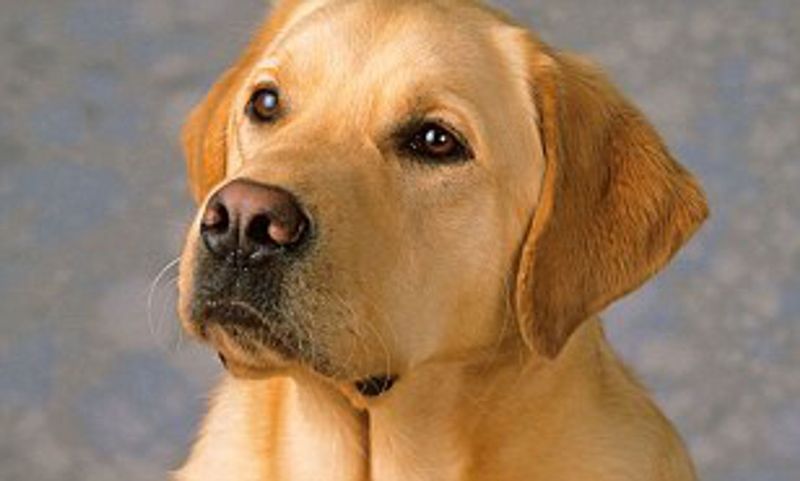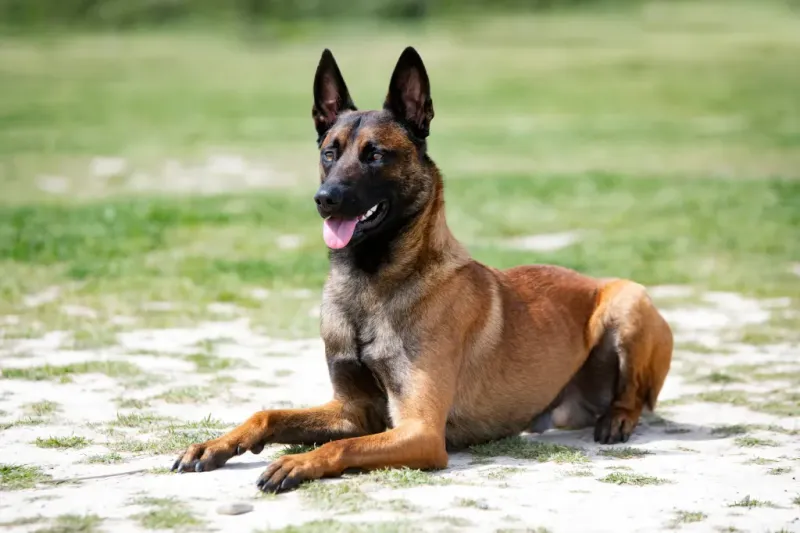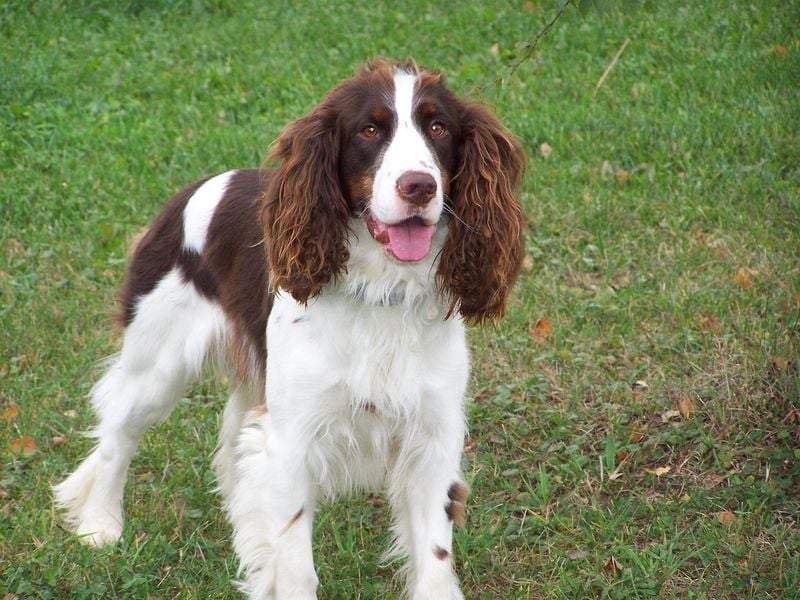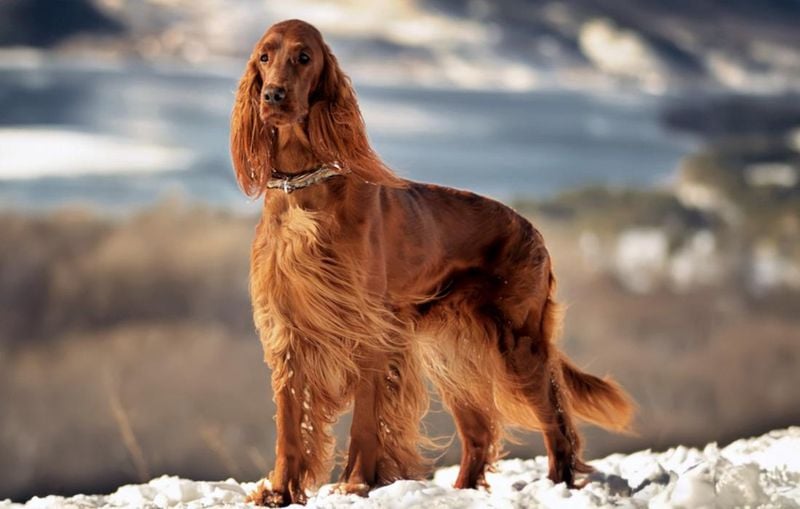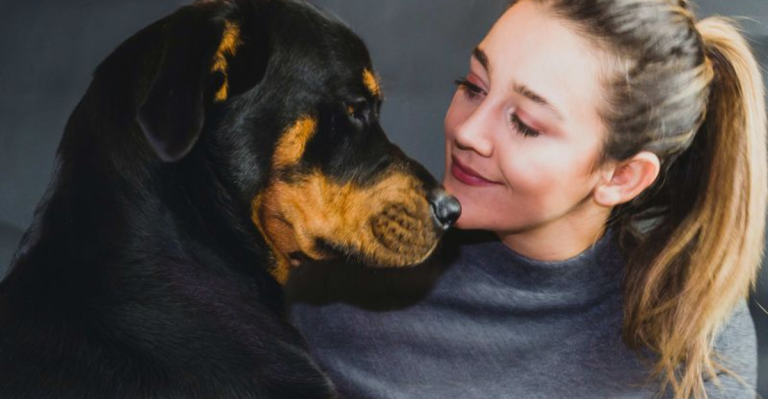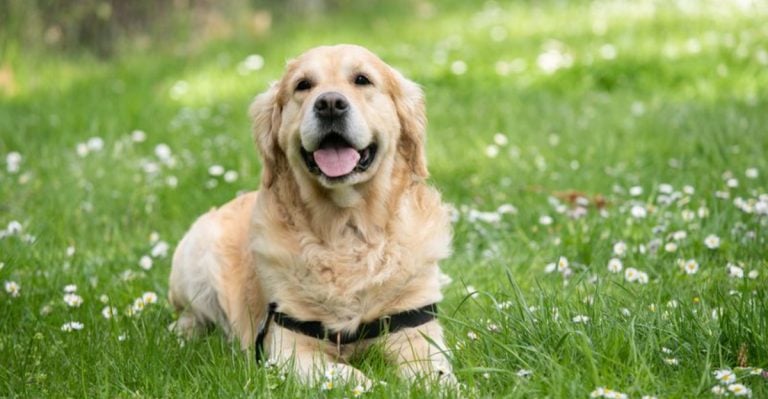20 Dog Breeds With the Most Remarkable Sense of Smell in the Canine Kingdom
Dogs possess an extraordinary sense of smell that far surpasses anything humans are capable of. While we rely on around 6 million olfactory receptors, dogs can have up to a staggering 300 million. This difference isn’t just impressive—it’s transformational. A dog’s nose is a finely tuned biological instrument, capable of detecting scents at concentrations nearly 100 million times lower than what we can perceive.
It’s no wonder that dogs play critical roles in life-saving search and rescue missions, narcotics and explosives detection, tracking lost individuals, and even identifying certain types of cancer and other diseases. Their ability to read the world through scent is nothing short of miraculous, and certain breeds have honed this natural gift to elite levels.
Whether bred for hunting, tracking, or detection work, these dogs use their powerful noses to serve, protect, and explore in ways that continue to astound scientists, handlers, and dog lovers alike. Let’s take a closer look at the dog breeds with the most exceptional sniffing abilities in the canine world.
1. Bloodhound: The Undisputed Scent Champion
Renowned as the gold standard in scenting ability, Bloodhounds can follow trails over 300 hours old! Their long, wrinkled faces aren’t just adorably droopy—they’re designed to trap scent particles while their massive nostrils process them.
These gentle giants have approximately 300 million scent receptors, the most of any breed. Law enforcement values their tracking skills so highly that Bloodhound evidence has been admissible in court since the 1950s.
Originally bred to track deer and boar, these determined dogs will follow a scent for miles without distraction. Their incredible nose combined with their tenacity makes them unrivaled scent detectives.
2. Basset Hound: Low-Riding Scent Specialist
Short-legged but mighty in the smelling department, Basset Hounds rank second only to Bloodhounds in scenting prowess. Their long, pendulous ears sweep the ground, stirring up scent particles while their loose skin traps odors for thorough investigation.
French monks originally developed these hunting companions in the Middle Ages. Their name ‘Basset’ comes from the French word ‘bas’ meaning low—perfectly describing their ground-hugging stance that keeps them close to scent trails.
Despite their comical appearance and lazy reputation, these dogs possess incredible focus when following interesting smells. With approximately 220 million scent receptors, they excel at rabbit and hare hunting.
3. Beagle: The Pocket-Sized Scent Detective
Merry and curious, Beagles pack an astonishing olfactory system into their compact frames. These small-to-medium hunters possess around 225 million scent receptors, making them exceptional at following even the faintest trails.
The Transportation Security Administration employs special ‘Beagle Brigade’ units at airports to sniff out prohibited agricultural products. Their friendly appearance makes them less intimidating to travelers than larger detection breeds.
Developed in England for hunting rabbits and hares, Beagles work in packs called ‘cries.’ Their distinctive baying voice—which signals to hunters when prey is found—adds to their charm as scent-tracking experts who won’t give up until they’ve followed a smell to its source.
4. German Shepherd: The Versatile Sniffer
Military and police forces worldwide trust German Shepherds for their exceptional scenting abilities combined with intelligence and trainability. Their powerful noses contain approximately 225 million scent receptors, allowing them to detect explosives, narcotics, missing persons, and even medical conditions.
Captain Max von Stephanitz developed the breed in 1899 with working abilities as the primary focus. Their versatility extends beyond scent work to protection, herding, and service dog duties.
German Shepherds can distinguish between identical twins by scent alone! Their ability to work in challenging environments while maintaining focus makes them ideal for complex detection scenarios where multiple distractions might confuse lesser breeds.
5. Labrador Retriever: The Enthusiastic Odor Expert
America’s favorite dog brings more than just a friendly personality to the table—Labs possess approximately 220 million scent receptors and an unmatched enthusiasm for using them. Their water-resistant double coats and webbed feet originally helped them retrieve fishing nets in icy Newfoundland waters.
Medical detection Labradors can identify cancer cells in laboratory samples with over 90% accuracy. Their natural retrieving instinct makes them perfect for search and rescue operations where finding and bringing back items is crucial.
The breed’s food motivation creates perfect training opportunities, as they’ll work tirelessly for treats. This combination of scenting ability, trainability, and desire to please humans makes Labradors exceptional detection partners in countless working scenarios.
6. Belgian Malinois: The Intense Scent Tracker
Often mistaken for German Shepherds, these intense working dogs bring laser-focused concentration to scent work. Belgian Malinois possess approximately 225 million scent receptors paired with boundless energy and drive that makes them exceptional at detecting everything from explosives to missing persons.
U.S. Navy SEALs famously used a Malinois named Cairo during the 2011 operation against Osama bin Laden. Their smaller size compared to German Shepherds makes them easier to transport and deploy in military operations.
Belgian shepherds developed these dogs in the 1800s for herding livestock. Today’s Malinois channel that working heritage into detection work, approaching every scent task with remarkable determination and stamina that outlasts most other breeds.
7. English Springer Spaniel: The Energetic Contraband Finder
Customs agencies worldwide rely on these medium-sized bundles of energy to detect contraband. With approximately 220 million scent receptors and a tireless work ethic, English Springer Spaniels excel at methodically searching luggage, vehicles, and shipping containers.
Originally bred to ‘spring’ game birds for hunters, these dogs naturally quarter back and forth across fields—a skill that translates perfectly to systematic searches. Their moderate size allows them to access tight spaces larger detection dogs can’t reach.
Unlike some working breeds, Springers maintain puppy-like enthusiasm well into adulthood. Their friendly appearance makes them less intimidating in public settings, while their incredible scenting abilities catch smugglers off guard—these seemingly playful dogs rarely miss even well-hidden contraband.
8. Coonhound: The Nocturnal Scent Specialist
American hunters developed various Coonhound breeds specifically for tracking raccoons and other game through challenging terrain at night. Black and Tan, Redbone, and Bluetick varieties all share exceptional scenting abilities with approximately 220 million olfactory receptors.
These determined trackers can follow cold trails for miles, using their distinctive baying voices to communicate with hunters when they’ve treed their quarry. Their endurance is legendary—a Coonhound will track tirelessly through swamps, forests, and mountains without losing the scent.
Coonhounds can differentiate between crossing trails and stay focused on their target scent even when other animal smells intersect the path. This remarkable ability to sort through complex scent pictures makes them exceptional at tracking specific individuals through crowded areas.
9. Pointer: The Precision Scent Locator
Famous for their distinctive ‘pointing’ stance when they detect game birds, these athletic hunters have approximately 220 million scent receptors. Their unique hunting style involves freezing completely still with one paw raised and nose aimed directly at hidden prey—effectively becoming living compass needles.
British aristocrats developed Pointers for wing-shooting as firearms improved in the 17th century. Unlike retrievers, these dogs specialize in finding game before it’s shot, using airborne scent particles rather than ground trails.
Pointers can detect bird scent from remarkable distances, sometimes over 100 yards away in favorable wind conditions. Their ability to process airborne scent particles while running at high speeds demonstrates an extraordinary level of olfactory processing that few other breeds can match.
10. Golden Retriever: The Versatile Scent Worker
Behind that friendly smile lies a serious scenting powerhouse with approximately 220 million olfactory receptors. Golden Retrievers excel in diverse scent work from disaster search and rescue to cancer detection, combining their exceptional nose with an eagerness to please their handlers.
Lord Tweedmouth developed the breed in Scotland during the late 1800s for retrieving waterfowl. Modern Goldens channel this heritage into finding everything from missing persons to minute cancer markers in medical samples.
Research shows Goldens can detect changes in human blood sugar levels and alert diabetic owners to dangerous fluctuations. Their gentle nature makes them ideal for medical detection work with vulnerable populations, while their scenting abilities remain sharp enough for the most demanding search scenarios.
11. Weimaraner: The Aristocratic Scent Tracker
Nicknamed ‘the Gray Ghost’ for their distinctive silver coat, these aristocratic hunters possess approximately 220 million scent receptors. German nobility developed Weimaraners in the early 19th century for tracking large game like deer, bear, and wolves—requiring exceptional scenting abilities.
Modern Weimaraners excel in search and rescue operations where their combination of scenting prowess and high energy enables them to cover large areas quickly. Their distinctive appearance comes with an equally impressive olfactory system that can distinguish between incredibly similar scents.
Unlike some hunting breeds, Weimaraners hunt using both airborne scent and ground tracking methods. This versatility makes them excellent all-purpose detection dogs who can adapt their scenting technique to match changing environmental conditions or detection targets.
12. Dachshund: The Underground Scent Navigator
Don’t let their comical appearance fool you—these ‘wiener dogs’ were bred specifically for their incredible scenting abilities. With approximately 125 million olfactory receptors packed into their small bodies, Dachshunds specialize in tracking scents through narrow underground tunnels where larger dogs can’t follow.
German hunters developed the breed in the 15th century specifically to hunt badgers—’dachs’ means badger in German. Their distinctive long bodies and short legs evolved to allow them to enter and navigate complex burrow systems while tracking prey by scent.
Modern Dachshunds still possess the determination and scenting abilities of their working ancestors. Their independent nature comes from needing to make scenting decisions underground without handler guidance—these small dogs bring big olfactory talent to any scenting challenge.
13. Irish Setter: The Elegant Scent Finder
Beneath that flowing mahogany coat lies a serious hunting dog with approximately 220 million scent receptors. Irish Setters were developed in Ireland specifically to locate game birds by scent, then ‘set’ (freeze in position) to indicate their location to hunters.
Their exceptional speed allows them to cover vast hunting grounds quickly while their sensitive noses detect even faint bird scents. The breed’s distinctive red coat made them visible to hunters across open fields—practical beauty combined with working ability.
Unlike retrievers, setters specialize in finding birds before they’re flushed, requiring exceptional air-scenting abilities. Modern Irish Setters still possess the scenting instincts of their working ancestors, even those bred primarily for show rings—their noses remain among the most sensitive in the canine world.
14. English Foxhound: The Endurance Scent Trailer
Developed specifically for the demanding sport of fox hunting, English Foxhounds possess approximately 220 million scent receptors paired with incredible stamina. These athletic hounds can follow a fox’s scent trail for hours across varied terrain without losing the track.
British hunters have maintained meticulous breeding records for these dogs since the late 1700s. Pack discipline is essential, as English Foxhounds traditionally work in groups of 20-30 dogs that must all follow the same scent without distraction.
Unlike some scent hounds that work slowly, English Foxhounds maintain a rapid pace while tracking. Their ability to process scent information at speed represents an extraordinary level of olfactory efficiency—these dogs literally run while simultaneously analyzing complex scent pictures.
15. Standard Poodle: The Sophisticated Scent Detector
Beyond their elegant appearance, Standard Poodles bring approximately 220 million scent receptors and exceptional intelligence to detection work. Originally developed as water retrievers in Germany, their curly coats protected vital organs while swimming in cold water to retrieve waterfowl.
The breed’s hypoallergenic coat makes them ideal for detection work with handlers who have allergies. Despite their reputation as fashion accessories, Standard Poodles excel in truffle hunting—locating valuable underground fungi worth thousands of dollars per pound.
Military and police units increasingly utilize these intelligent dogs for narcotics and explosive detection. Their combination of trainability and scenting ability makes them versatile working dogs who can master complex detection tasks that confound other breeds.
16. Border Collie: The Brainy Scent Processor
Widely considered the most intelligent dog breed, Border Collies combine approximately 220 million scent receptors with unmatched problem-solving abilities. This cognitive advantage allows them to process scent information in more complex ways than many other breeds.
Scottish shepherds developed these dogs to work independently herding sheep across vast, rugged landscapes. Modern Border Collies excel in scent detection sports like nosework, where they must identify specific target odors among numerous distractions.
Unlike single-purpose detection dogs, Border Collies can learn multiple scent targets and switch between them on command. Their extraordinary capacity to learn and remember specific odors makes them versatile detection partners who continue improving their scenting skills throughout their working lives.
17. Airedale Terrier: The Tenacious All-Purpose Sniffer
Known as the ‘King of Terriers,’ Airedales combine approximately 150 million scent receptors with the characteristic terrier determination. British hunters developed them in the Aire Valley of Yorkshire as versatile working dogs capable of tracking otters and other game on land and in water.
During World War I, Airedales served as messenger and Red Cross dogs, using their scenting abilities to locate wounded soldiers on battlefields. Their wiry, weather-resistant coats allowed them to work in harsh conditions while protecting them from brambles and rough terrain.
Unlike specialized scent hounds, Airedales bring versatility to detection work. Their ability to switch between different tasks—from tracking to retrieving to guarding—made them popular police dogs before German Shepherds largely replaced them in the mid-20th century.
18. Jack Russell Terrier: The Compact Scent Hunter
Small but mighty in the scenting department, Jack Russell Terriers pack approximately 120 million olfactory receptors into their compact frames. Reverend John Russell developed these energetic dogs in 19th century England specifically to hunt foxes that went underground where larger hounds couldn’t follow.
Modern Jack Russells excel in barn hunt competitions, where they must quickly locate rats (safely enclosed in tubes) hidden in straw bales. Their intense prey drive combines with their sensitive noses to create exceptional vermin hunters.
Unlike some working terriers, Jack Russells maintain their scenting abilities without human assistance. Their independent hunting style evolved because they needed to track and locate prey underground without handler guidance—making them self-sufficient scent detectives.
19. Cairn Terrier: The Ancient Scent Specialist
These rugged little dogs from the Scottish Highlands have approximately 120 million scent receptors specifically evolved for hunting in rocky terrain. For centuries, they’ve used their keen noses to locate and hunt otters, foxes, and badgers that hide among the rock piles (cairns) that give the breed its name.
The breed’s harsh outer coat and soft undercoat protected them while working in harsh Scottish weather. Toto from ‘The Wizard of Oz’ was a Cairn Terrier, bringing worldwide attention to this ancient working breed.
Unlike breeds developed for specific modern hunting styles, Cairns evolved naturally over hundreds of years. Their scenting abilities developed through practical work rather than selective breeding programs—resulting in dogs with authentic, time-tested olfactory talents honed by generations of actual hunting experience.
20. American Pit Bull Terrier: The Underestimated Scent Worker
Rarely recognized for their scenting abilities, Pit Bulls possess approximately 225 million olfactory receptors and growing popularity in detection work. Their powerful build combined with their sensitive noses makes them excellent search and rescue dogs, particularly in disaster scenarios requiring both strength and scenting precision.
Originally developed for bull-baiting and later for farm work, modern Pit Bulls increasingly serve in detection roles. Organizations like Animal Farm Foundation train rescued Pit Bulls as narcotics detection K9s, giving these often-overlooked dogs meaningful work while saving taxpayer money.
Their eager-to-please nature and high play drive create perfect training opportunities. Detection work provides positive outlets for their energy and intelligence, while their remarkable scenting abilities often surprise those who previously underestimated this versatile breed’s olfactory talents.





